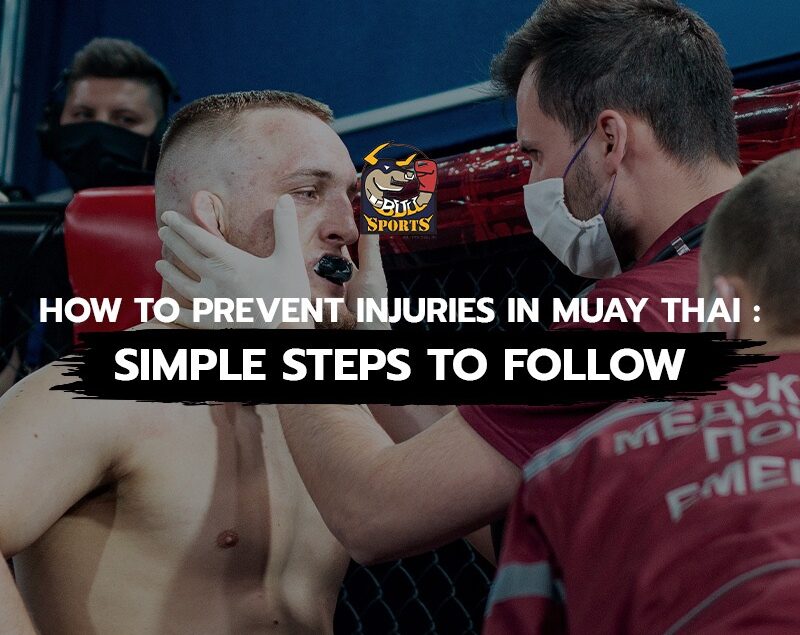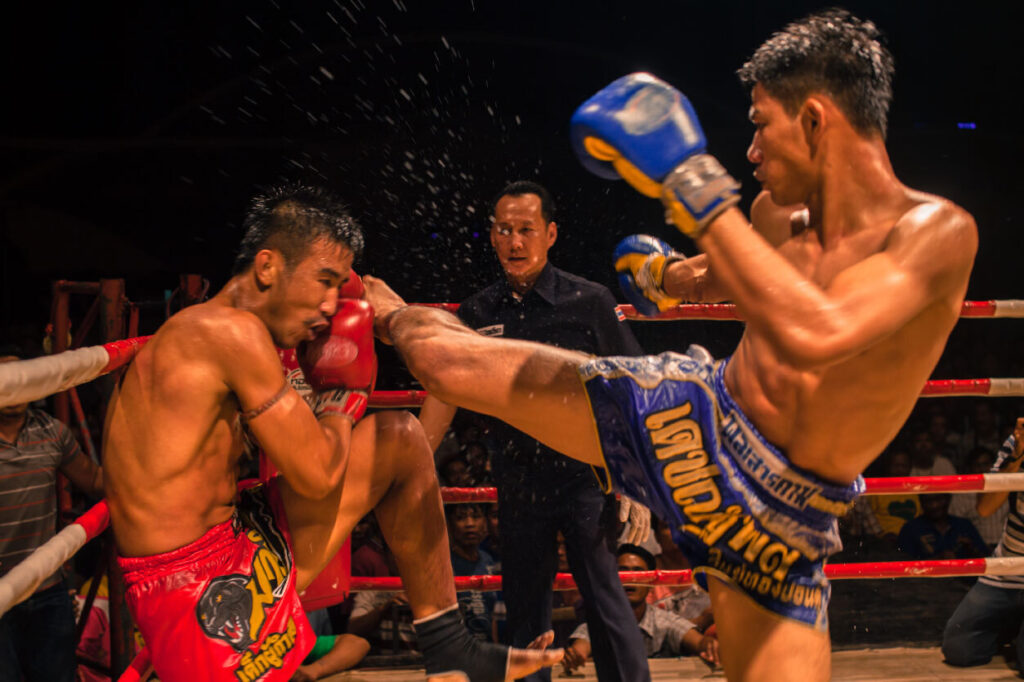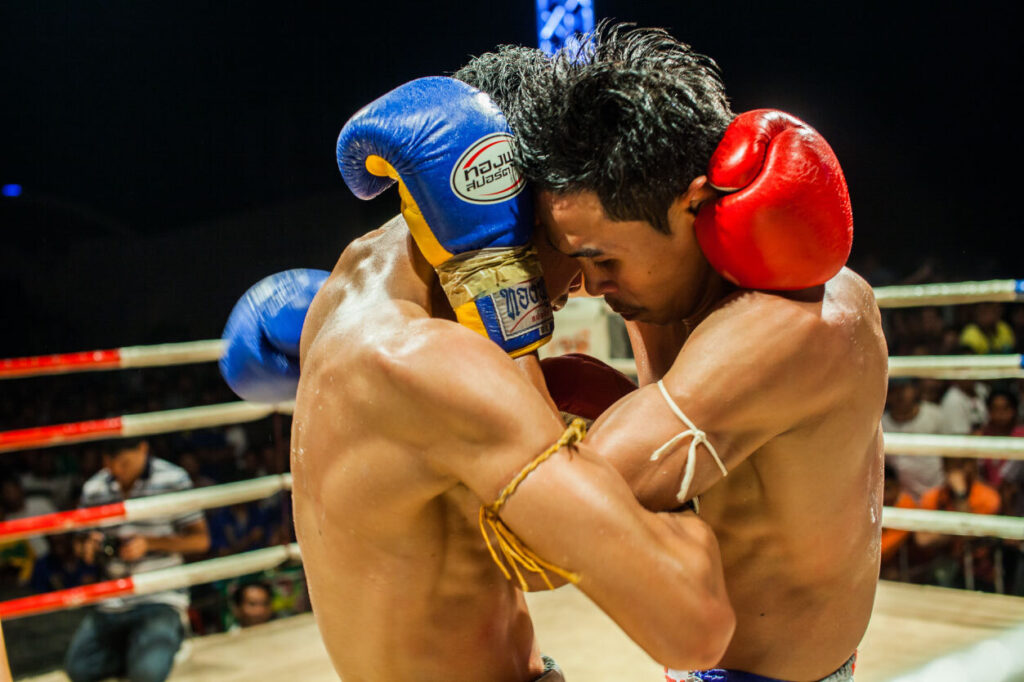
Muay Thai is an intense and dynamic sport that offers a wide range of physical and mental benefits. However, its high-impact nature can increase the risk of injuries without proper training. Whether you’re the sport or an experienced fighter, understanding how to prevent injuries is crucial for maintaining a long and healthy training experience. Here are some of the most common injuries in Muay Thai and essential tips on how to avoid them.
Common Injuries in Muay Thai
Understanding the common injuries in Muay Thai can help practitioners take preventive measures and seek timely treatment. This ensures that they can train effectively and safely. Some of the most frequent injuries include:
Bruising: Due to the sport’s intensity, bruising is frequent in Muay Thai. Fighters often experience red marks and bruises from strikes like punches and kicks. While many practitioners are mentally prepared for this aspect of training, wearing proper protective gear is the easiest way to minimize bruising. If you do get bruised, it’s important to allow enough time for recovery before getting back into training.
Wrist, Ankle, and Knee Injuries: Joint injuries, especially wrists, ankles, and knees, are common in Muay Thai. These typically occur due to improper technique, rushing movements, or pushing your body too hard before developing sufficient muscle memory. To avoid such injuries, focus on correct form and gradually master the fundamentals. By practicing slow, controlled movements, you allow your body to build the necessary strength and stability for more advanced techniques, helping to minimize the risk of injury.
Eye Injuries: Although the bones around the eyes provide some protection, direct hits to the face can still cause significant eye injuries in Muay Thai. Strikes from below pose a particular risk to the eyes, potentially leading to retinal damage or other serious injuries. Wearing protective gear can help reduce this risk.
Head Injuries: Head injuries are a serious concern in Muay Thai due to the common occurrence of punches and kicks to the head. Using proper headgear and gloves during training is crucial for minimizing the risk of concussions or long-term brain damage. Sparring without these protective measures dramatically increases the chance of head trauma, which can result in skull or facial fractures, damage to brain tissue, and even internal bleeding.
Bone Fractures: Bone fractures are a potential risk in Muay Thai, often resulting from heavy impacts, twisting motions, or repeated stress on specific areas of the body. Recognizing the signs of a fracture and administering immediate first aid is crucial. While fractures may not be life-threatening, improper or delayed treatment can lead to permanent disability, making prompt medical attention essential for a full recovery.
Effective Ways to Prevent Injuries in Muay Thai

Preventing injuries in Muay Thai requires taking essential precautions before, during, and after training. Following these essential steps can significantly reduce the risk of injury and ensure safer practice.
Always Start with a Warm-up
A proper warm-up is essential to prepare your muscles and joints for the physical intensity of Muay Thai. It increases blood flow and loosens up tight muscles, reducing the risk of strains and ligament injuries.
Use Protective Gear Properly
Using well-fitted protective gear such as hand wraps, shin guards, and a mouthguard can significantly reduce the risk of injury. Ensure all gear is in good condition and adjusted correctly to provide the necessary protection for your hands, shins, teeth, and other vulnerable areas.
Train and Fight with Correct Techniques Without Overdoing It
Proper technique is vital for performance and injury prevention. Incorrect movements can strain muscles and joints, increasing injury risk. Focus on mastering form and avoid pushing your body beyond its limits to prevent fatigue and mistakes that could lead to accidents.
Cool Down and Stretch After Every Session
Cooling down and stretching after training are just as important as warming up. These activities help your muscles recover, reduce stiffness, and improve flexibility, all of which are key to preventing long-term injuries. Incorporating gentle movement, such as walking after your workout, further benefits your body by promoting oxygen-rich blood flow to your muscles, reducing soreness, and easing muscle pain. This process also supports overall circulation and relaxation.
Listen to Your Body: Take Breaks if Needed
Recognizing when your body needs rest is one of the most important aspects of preventing injuries. It’s important to assess whether you’ve had efficient sleep and recovery before starting your workout. If you’re unusually tired, in pain, or experiencing discomfort, it’s time to take a break. Ignoring these warning signs and pushing through can exacerbate minor issues, potentially leading to more serious injuries that could hinder your long-term training progress. Prioritizing rest helps ensure that you stay healthy and maintain your ability to train effectively.
First Aid Tips: Managing Injuries with the RICE Method

When an injury occurs during training, quick action is essential. The RICE method offers an easy and effective way to manage injuries within the first 24-72 hours. This approach—Rest, Ice, Compression, and Elevation – helps reduce pain and swelling and prevent further damage. Here’s how each step works to aid recovery.
Rest (R):
- Immediately stop using the injured area to avoid further strain.
- Minimize movement and avoid applying pressure to the injured part.
- Consider using crutches or a sling for support, depending on the injury.
- Rest the area for at least 24-48 hours or until noticeable improvement.
Ice (I):
- Apply ice packs, cold compresses, or cooling gel to the affected area.
- Ice for 15-20 minutes every 2-3 hours, ensuring frequent intervals.
- Always wrap the ice in a cloth to prevent direct contact with the skin.
- Continue icing the area for the first 24-48 hours after the injury.
Compression (C):
- Use an elastic bandage to wrap the injured area firmly but not too tightly.
- Start wrapping from the lower part of the limb and move toward the body.
- Check for signs of restricted blood flow, like numbness or a tingling sensation, and
- adjust the bandage if necessary.
Elevation (E):
- Keep the injured area elevated above heart level to reduce swelling.
- Use pillows or any comfortable support to maintain the elevated position.
- Aim to keep the area elevated as much as possible during rest or for at least 2-3 hours each day.
This helps improve blood circulation and encourages quicker recovery by reducing inflammation.
In summary, preventing and managing injuries in Muay Thai requires a comprehensive approach that includes proper preparation, technique, and recovery. Implementing these critical practices significantly reduces the risk of injury. Additionally, addressing injuries promptly with the RICE method can speed up recovery. Focusing on these strategies not only ensures a safer training experience but also helps you maintain your health, allowing you to fully enjoy the benefits of Muay Thai while minimizing potential setbacks.
Related Articles



